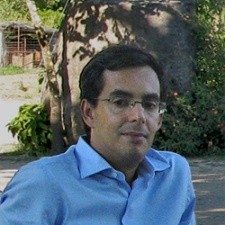Ecosystem services: urban parks under a magnifying glass
- Articles in SCI Journals
- Jan, 2018
Mexia, T., Vieira, J., Príncipe, A., Anjos, A., Silva, P., Lopes, N., Freitas, C., Santos-Reis, M., Correia, O., Branquinho, C. & Pinho, P. (2018) Ecosystem services: urban parks under a magnifying glass.
Environmental Research,
160, 469-478. DOI:10.1016/j.envres.2017.10.023 (IF2018 5,026; Q1 Public, Environmental & Occupational Health)
Summary:
Urban areas’ population has grown during the last century and it is expected that over 60% of the world population will live in cities by 2050. Urban parks provide several ecosystem services that are valuable to the well-being of city-dwellers and they are also considered a nature-based solution to tackle multiple environmental problems in cities. However, the type and amount of ecosystem services provided will vary with each park vegetation type, even within same the park. Our main goal was to quantify the trade-offs in ecosystem services associated to different vegetation types, using a spatially detailed approach. Rather than relying solely on general vegetation typologies, we took a more ecologically oriented approach, by explicitly considering different units of vegetation structure and composition.
This was demonstrated in a large park (44 ha) located in the city of Almada (Lisbon metropolitan area, Portugal), where six vegetation units were mapped in detail and six ecosystem services were evaluated: carbon sequestration, seed dispersal, erosion prevention, water purification, air purification and habitat quality.
The results showed that, when looking at the park in detail, some ecosystem services varied greatly with vegetation type. Carbon sequestration was positively influenced by tree density, independently of species composition. Seed dispersal potential was higher in lawns, and mixed forest provided the highest amount of habitat quality. Air purification service was slightly higher in mixed forest, but was high in all vegetation types, probably due to low background pollution, and both water purification and erosion prevention were high in all vegetation types.
Knowing the type, location, and amount of ecosystem services provided by each vegetation type can help to improve management options based on ecosystem services trade-offs and looking for win-win situations. The trade-offs are, for example, very clear for carbon: tree planting will boost carbon sequestration regardless of species, but may not be enough to increase habitat quality. Moreover, it may also negatively influence seed dispersal service. Informed practitioners can use this ecological knowledge to promote the role of urban parks as a nature-based solution to provide multiple ecosystem services, and ultimately improve the design and management of the green infrastructure. This will also improve the science of Ecosystem Services, acknowledging that the type of vegetation matters for the provision of ecosystem services and trade-offs analysis.
http://www.sciencedirect.com/science/article/pii/S0013935117316602
Download Publication






